Interest rates are a key tool for central banks to implement monetary policy, and changes interest rates create significant fluctuations in financial markets.
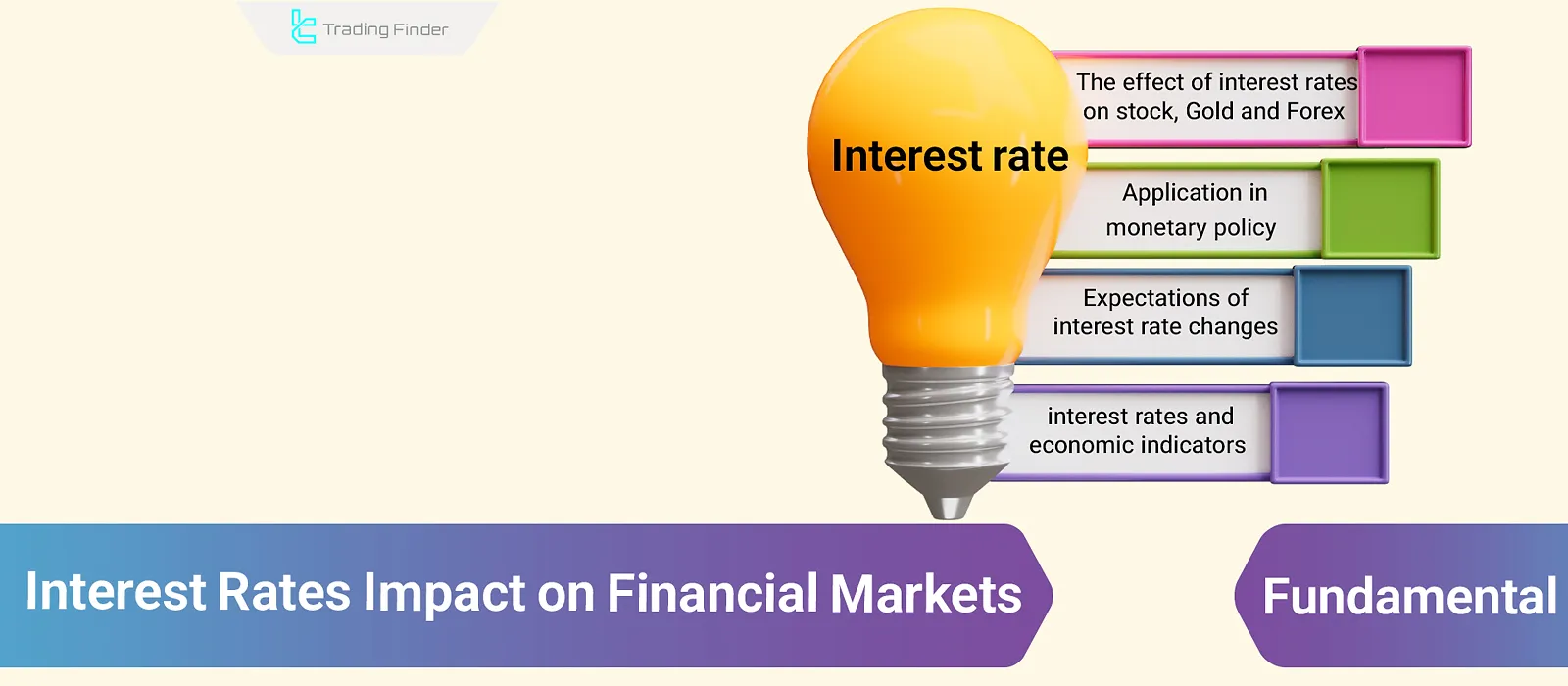
Typically, increasing interest rates leads to currency strengthening, while decreasing interest rates causes currency weakening. Additionally, expectations of interest rate changes also influence the market.
Why Are Interest Rates Important in Financial Markets?
Changes in interest rates play a crucial role in financial markets because they directly impact inflation, economic growth, and unemployment rates. Changes in these factors lead to either the strengthening or weakening of currencies.
According to academic definitions, interest rates can be defined as the "value of money"; the interest rate is the cost of borrowing money. This means the borrower must repay the borrowed amount plus the interest rate or borrowing cost.
For example, assume the interest rate is 5%, and you borrow 1000$. In this case, you must repay 1000$ plus 5% of it (50$). Actually, the 50$ is the cost of borrowing.
To monitor interest rates of various economies, you can use TradingFinder interest rate tool.
The Interest Rate Impact on Economic Trends and Indicators
Changes in interest rates affect liquidity, consumer demand, and economic growth. Increasing interest rates reduces inflation and economic growth, acting as a constraint on the economy. Conversely, lowering borrowing costs supports economic growth, but it may also lead to increased inflation.
The table below shows the relationship between interest rates and key economic indicators:
Indicators | Result of Lowering Interest Rates | Result of Increasing Interest Rates |
Inflation | Increase | Decrease |
Economic Growth | Increase | Decrease |
Unemployment Rate | Decrease | Increase |
You can track economic reports from the economic calendar on the TradingFinder website.
The Relationship Between Interest Rates and Inflation
Decreasing or increasing interest rates directly affects liquidity and inflation. Lower borrowing costs increase liquidity, leading to higher consumer demand, resulting in increased inflation.
Additionally, according to the monetary root of the inflation formula, if the money supply exceeds the supply of goods, inflation occurs.
Conversely, increasing borrowing costs reduces liquidity, and limits demand, and lower demand leads to reduced inflation.
The Relationship Between Interest Rates and Economic Growth
According to the expenditure approach in calculating GDP (Gross Domestic Product), demand is one of the factors influencing economic growth.
Any action that suppresses demand, such as increasing interest rates or reducing liquidity, leads to a decline in economic growth. Conversely, any action that stimulates demand, such as lowering interest rates or increasing liquidity, boosts economic growth.
Note: The expenditure approach in calculating GDP is based on the following factors:
- Trade Balance
- Government Expenditures
- Consumer Demand
- Investment in Productio
The Relationship Between Interest Rates and Unemployment Rates
The unemployment rate has an inverse relationship with economic growth; Increased economic growth leads to a lower unemployment rate.
Thus, lowering borrowing costs and increasing liquidity is effective in reducing the unemployment rate. Conversely, increasing borrowing costs and putting pressure on producers leads to a higher unemployment rate. Example of rising unemployment due to increased borrowing costs:
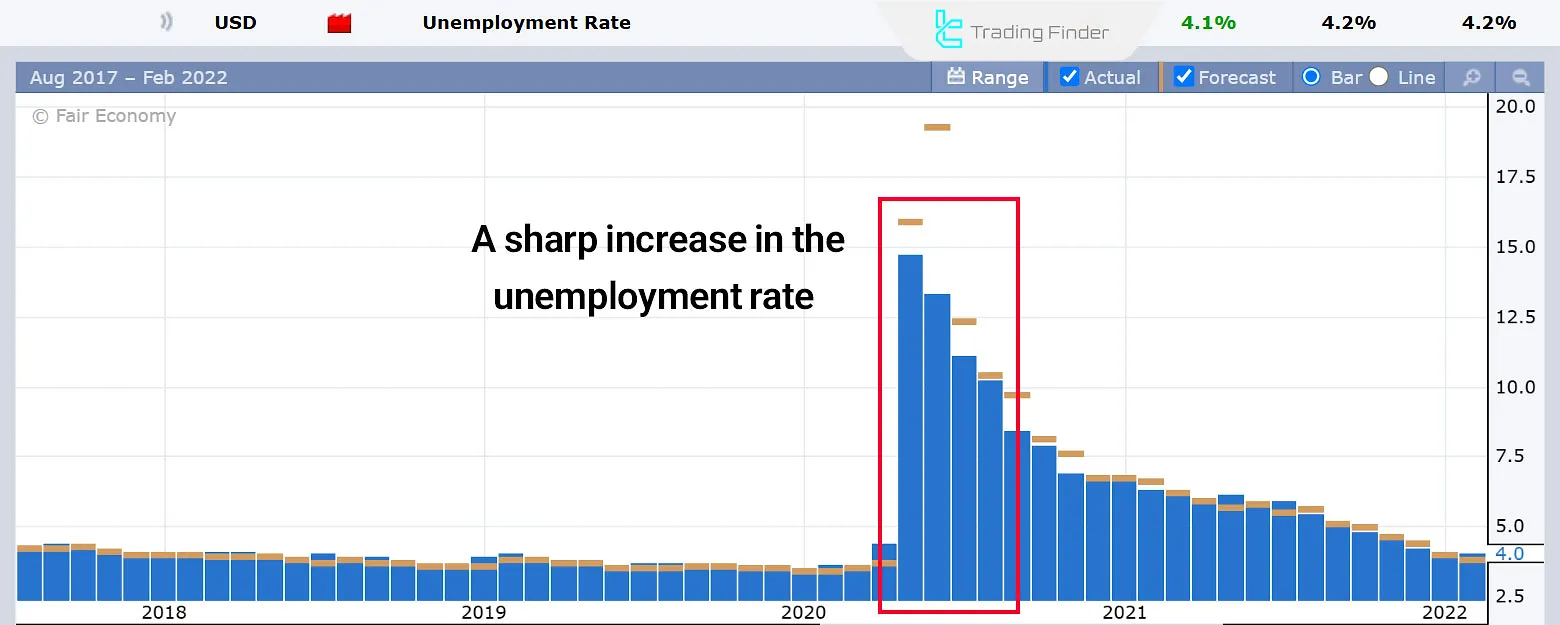
At the beginning of 2020, following the onset of the COVID-19 pandemic, the US unemployment rate increased sharply (image above). To combat the recession and reduce unemployment, the Federal Reserve lowered interest rates, as shown in the image below.
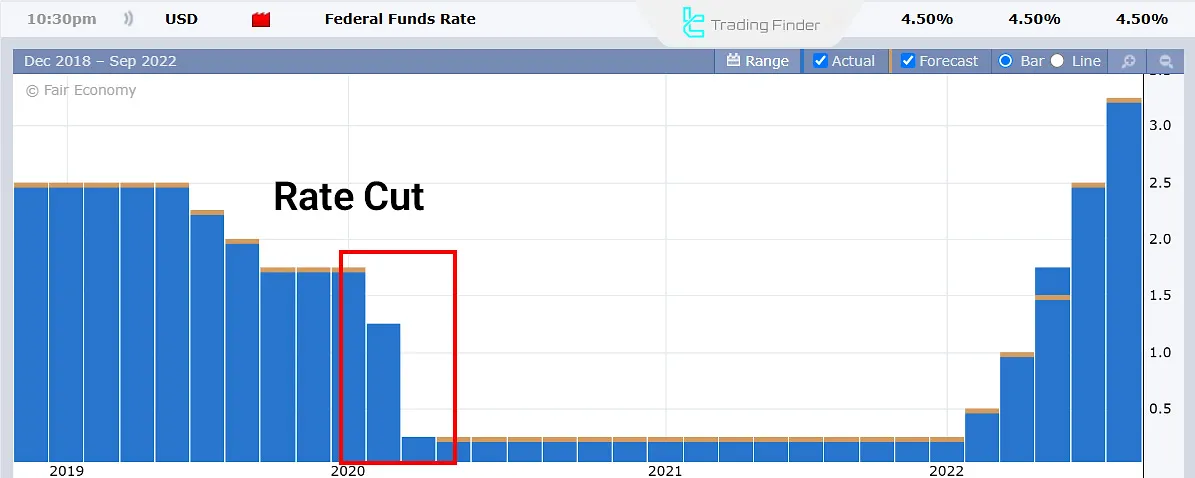
What Factors Influence Changes in Interest Rates?
Implementing changes and setting interest rates is the responsibility of the central bank. Considering their dual mandate (controlling unemployment and inflation) and monitoring economic data, central banks adjust interest rates.
Central banks consider the following data when setting interest rates:
- Inflation: If inflationary pressures are felt in the economy, the central bank will raise interest rates to control inflation (contractionary monetary policy);
- Unemployment Rate: If the unemployment rate rises, the central bank lowers interest rates to stimulate the economy and reduce unemployment (expansionary monetary policy).
Impact of Interest Rates on Financial Markets
Changes in interest rates lead to changes in exchange rates, thereby influencing stock, commodity, and Forex market.
The Effect of Interest Rates on Forex
As the money supply increases, the currency's value decreases; Conversely, as the money supply decreases, the currency's value increases.
According to this principle, increasing borrowing costs strengthens the currency. Conversely, lowering borrowing costs weakens the currency.
Interest Rate Impact on the Stock Market
The effect of interest rates on the stock market is such that increasing borrowing costs suppresses demand, making it harder to obtain loans, and putting pressure on producers.
Thus, during periods of contractionary policy or increased borrowing costs, the stock market moves away from prosperous days.
The Effect of Interest Rates on Gold
Gold, [the long-standing competitor to fiat currency], is affected by changes in interest rates. Increasing interest rates leads to a correction in gold prices, while decreasing interest rates causes gold to rise.
Note: The effect of interest rates on gold appears in the long term, and other factors also influence gold's trend.
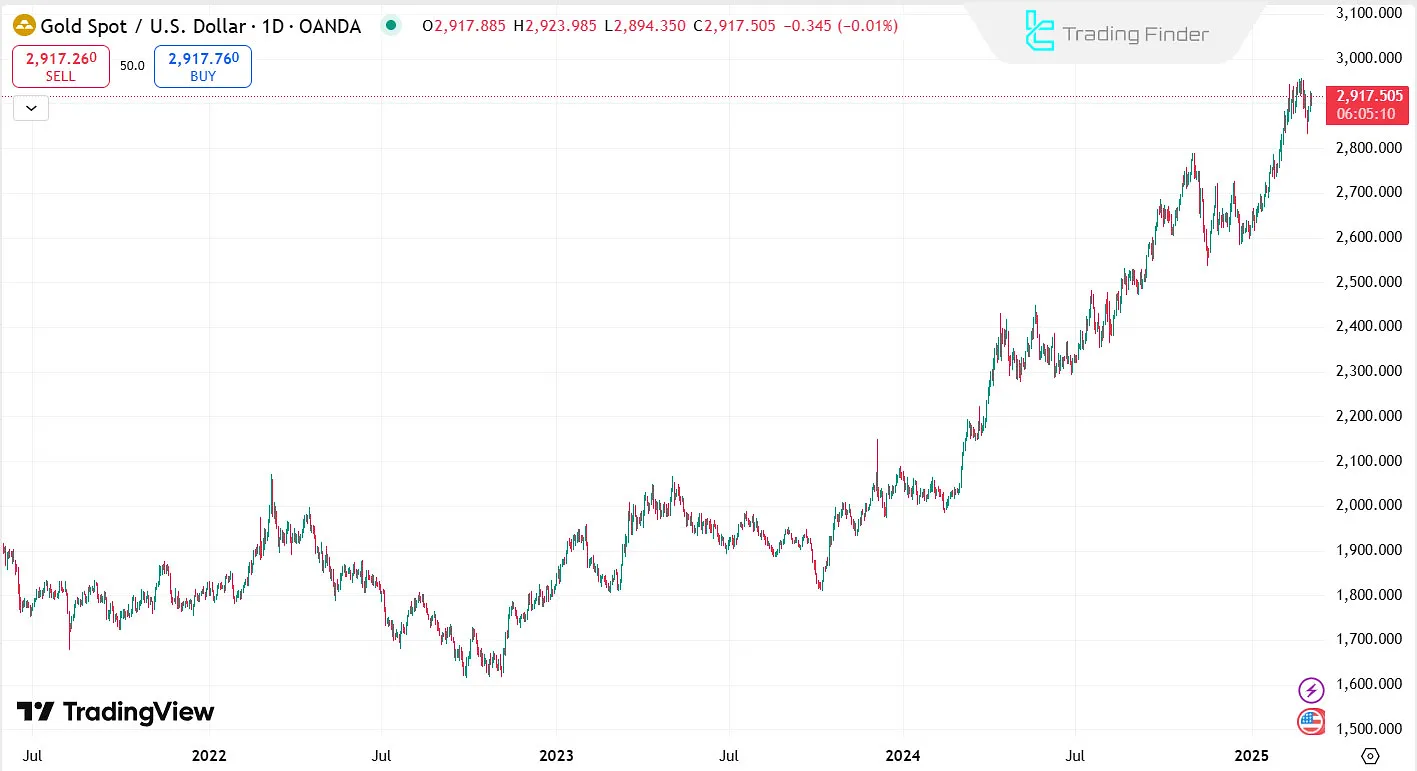
Gold's trend in 2023 and 2024 was driven by geopolitical tensions, proving that rising interest rates alone cannot determine the trend.
Expectations of Interest Rate Changes in Forex
Currencies will strengthen if market participants expect an interest rate hike during the upcoming central bank meeting. Impact of Interest Rate Changes on Forex:
- Expectations of Rising Interest Rates: Strengthen the related currency and increase risk aversion in the market;
- Expectations of Falling Interest Rates: Weaken the related currency and increase risk appetite in the market.
Expectations of US interest rate changes can be viewed on the CME FedWatch Tool website.
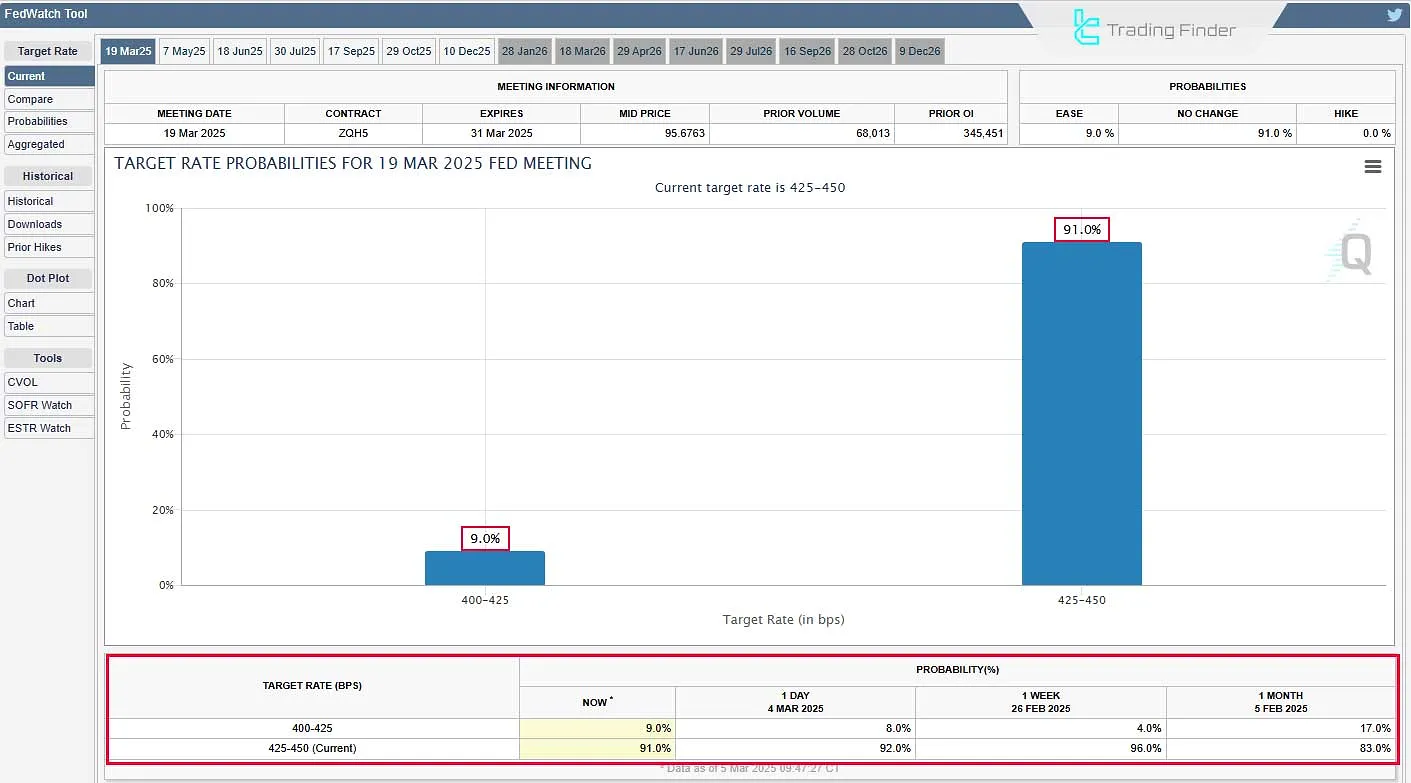
This image from the CME FedWatch Tool shows that, at this moment, 91.0% of the market expects interest rates to remain unchanged during the upcoming Federal Reserve meeting.
Example of the Impact of Interest Rate Expectations on the Market
As shown in the image below, with changes in market expectations for an interest rate hike by the BOJ (Bank of Japan), the Japanese yen has been significantly affected.
When the market expects an interest rate hike, the yen strengthens. However, when interest rates are expected to remain unchanged, the yen weakens.
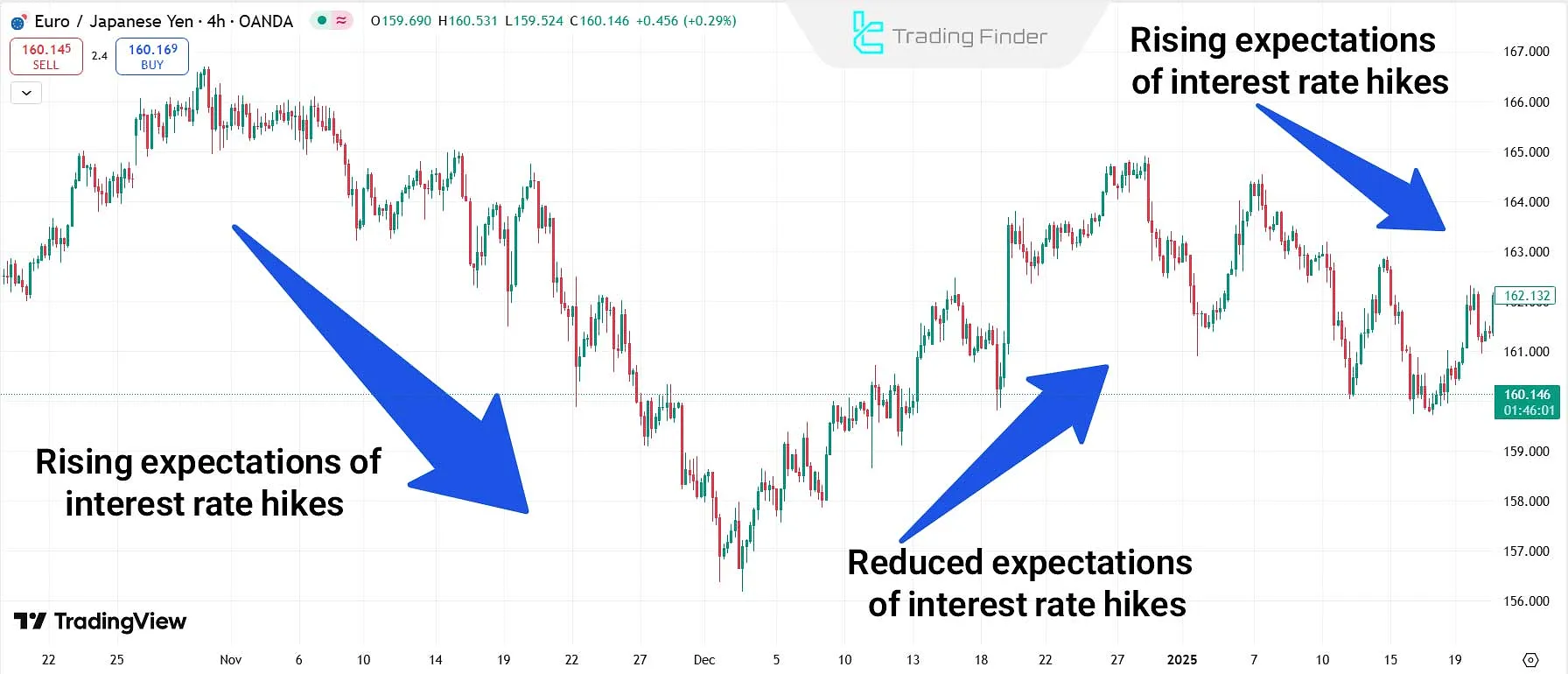
Conclusion
Increasing interest rates limits economic growth by reducing liquidity and is a contractionary policy that strengthens currency.
Conversely, lowering interest rates increases liquidity, stimulates economic growth, and is an expansionary policy. This action leads to currency weakening.
By monitoring market expectations for interest rate changes, the direction of currency pairs can be predicted.





